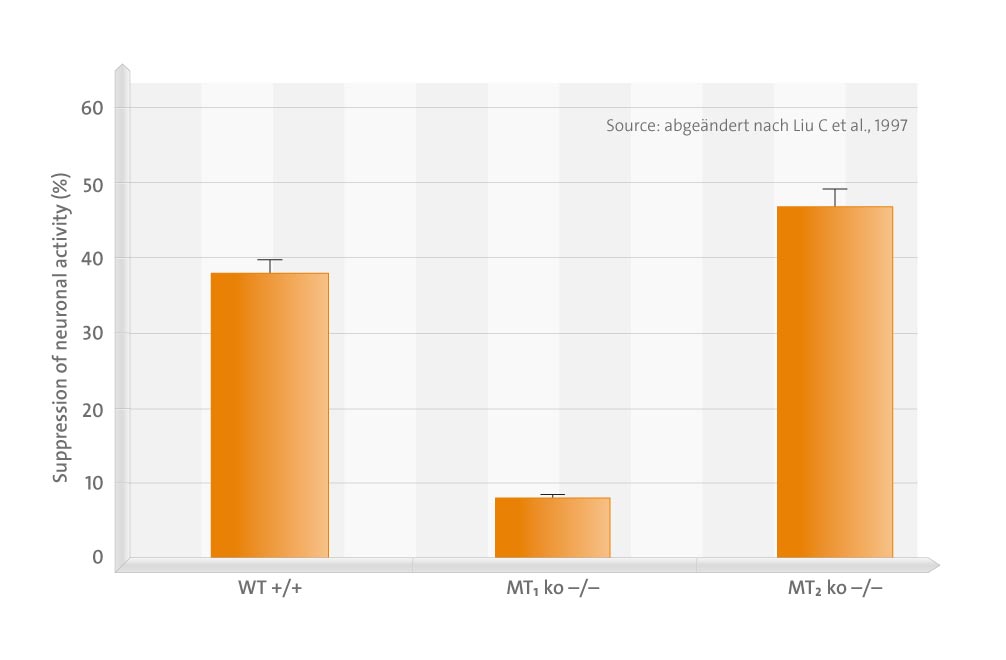The circadian release of the hormone melatonin is regulated by the suprachiasmatic nucleus (SCN), which feeds back into the nucleus to modulate sleep and circadian phase through activation of the MT(1) and/or MT(2) melatonin receptors.
Considering the functions of the SCN as a sleep and circadian rhythm regulator, melatonin and melatonin receptor agonists have attracted interest as being possible treatments for sleep and circadian rhythm sleep disorders. Part of this interest has centered on elucidating which melatonin receptors are targets for the regulation of these functions within the SCN. Two G-protein coupled melatonin receptors, the MT(1) and MT(2), inhibit neuronal activity and phase shift circadian firing rhythms in the SCN, respectively.
Recent reports have uncovered possible interactions between the two types of receptors in the mammalian SCN, as well as the role of physiological and supraphysiological levels of melatonin on the molecular pharmacology and cellular changes of human and rodent melatonin receptors via desensitization and internalization mechanisms. These data outline the complexity of the interplay between melatonin and its receptors in the SCN and their corresponding roles in sleep and circadian regulation.
Although further studies are necessary, a great deal of progress has been made toward understanding how melatonin and its agonists contribute to sleep and circadian phase changes, and how best to develop compounds that can target the functions of the SCN specifically and effectively.
